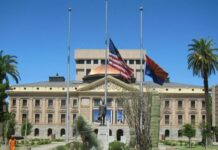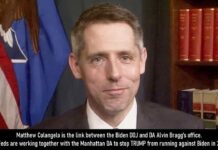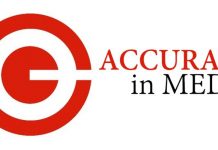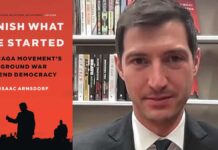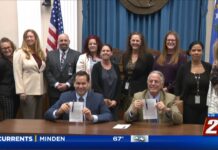Dr. SHIVA Ayyadurai, MIT PhD, the inventor of email, scientist and engineer, shares the results of his team’s mathematical analysis of four major county’s votes in Michigan in the Trump-Biden election that reveals an unfortunate truth of U.S. voting systems. The analysis raises important questions for election integrity.
Benny Smith and Phil Evans join Dr. Shiva Ayyadurai for this engineering, scientific presentation.
Partial Transcript
Dr. Shiva Ayyadurai: Well good afternoon everyone it’s Dr. Shiva Ayyadurai and we have a very, very important discussion today on a set of mathematical analysis that we’ve done that reveals some unfortunate truths about our U.S. voting systems and specifically were going to be reviewing the Michigan voting results in four counties. So we’re going to wait for people to join. We’re having people joining us. so were going to have that process go on. We have about 280 and we’re going to wait for people to join. So as people are joining, I’m also wanting to share with you were joined by two great guests, Bennie Smith, who, Benny and I did a video before, and also a new guest, Phil Evans, and I’ll give their backgrounds and I’ll wait until people join. But the most important thing we’re going to discuss is going to be an engineering, scientific presentation and we’re going to follow it in many ways how we present scientific results. We’re going to have a little bit of background. We’re going to give you, everyone, a decent amount of education because there’s some very important concepts we’re discussing here, but one of the things, as many of you know, I’m very committed to is to taking very, very complex concepts and putting it into a manner that all of you can appreciate and not only learned from but then you can teach this to others. It’s the model of learn, teach and serve. We live in a world right now of media companies who cherry pick what they want, they have an agenda, so it’s really comes down to us, and one of the themes of today’s conversation is that yes there’s an election taking place. And every time there’s an election everyone gets all urgent about that election issue.
But we need to take a step back, and we have a great opportunity today to really start looking at much more fundamental issues. About what it means to be a citizen, which is were supposed to have Democratic processes and the fact is, for far too long, you and others and many people have been sleeping. We’ve outsourced our decision-making to politicians, who have their agendas. And we have ended up with voting systems where the inputs and the outputs are unverifiable, and you’re going to see that in a very profound way in today’s discussion.
But, most importantly, I think the key takeaway is it’s time that you get educated or be enslaved, and this is beyond a left-to-right discussion. This is beyond Republican and Democrat. This is beyond black and white. It’s supremely fundamental. And it’s a aspect of the world that we live in that if we want to truly be free citizens, it requires some significant responsibility on all of us. And ultimately the people we put into positions of power reflect our state of consciousness. So the goal here today is to elevate people’s consciousness and we have an incredible learning opportunity. Life rarely affords to see these kinds of opportunities, but we have that opportunity. You have people here, many of you know who I’ve talked about before. Many of the people who work, involved in many of the very things I do. But today I can assure you that you’re going to get an educational lesson, so listen carefully. But we have great people who been working on this for many, many years in a committed way and the events that are happening give us an opportunity for all people to get educated.
So let me just some share the screen here, what would be covering today. We go to the application window and I’m going to introduce our wonderful guest. so let me share this. So we have Phil Evans. So if you notice the title of the talk is a Mathematical Analysis of Trump-Biden 2020 Election Vote Counties in Four Counties in the State of Michigan. I’m going to be the lead presenter, but we also have Phil Evans. Phil are you there? Can you say hello?
Phil Evans: Hello
Phil is a, we’ll give Phil’s background. And we also have Benny Smith. Let me bring, Benny, you’re there, right?
Benny Smith: Yes, I’m here. Hello everybody.
Dr. Shiva Ayyadurai: Yeah, Benny’s also a, and I’ll get people’s backgrounds, in fact let me sort of jump right into it. Just for those of your new to me, the area of math and science is something I have to do for a long time to get a bunch of degrees at MIT. But I’m a scientist, inventor, an engineer, a Fulbright scholar. The election has not been certified in Massachusetts. I’m still a U.S. Senate candidate in Massachusetts.
Benny Smith, Benny Smith is a software engineer. Benny, your also an election commissioner right?
Benny Smith: That’s right.
Dr. Shiva Ayyadurai: And a data analyst and Benny was one of the first people who discovered, probably the first person who discovered, and we’ll get into that, the fact that our votes are stored as a decimal fractions. Very, very important. But Benny’s very, very committed to election integrity. So, great to have you Benny.
Dr. Shiva Ayyadurai: On the phone we have Phil Evans, who is, like myself, Phil is a fellow engineer, Bachelor of Science and Engineering. By the way, Benny’s been a computer programmer. He’s an avid software engineer a well, well adept at it. But Phil, you went Clemson. You’re also an inventor and engineer and Phil, you know, when you work as an engineer you learn some math and Phil has done some great, great work, which were going to share with you, as a data analyst. Phil, are you there? Phil? Did we lose Phil? Hello? Phil?
Phil Evans: We’re having some audio problems. We’re under attack.
Dr. Shiva Ayyadurai: Okay, great, no worries. So, what I want to talk about before we jump into this some very, very basic concepts everyone should understand. You can look at other videos that we did earlier on this whole election Integrity issue, but fundamentally, if you think about that box here as your voting system, as an any system, there’s an input that comes in and an output that comes out. And evidence is something where it’s the inputs and the outputs should be unambiguous so you can predict in a very clear way. Evidence is fundamentally unambiguous predictions. And what you’ll realize is, in the current system that we have, the input to our voting systems, we don’t have voter registration cards, we don’t really have authentication, some places do. We don’t really give receipts to the person that actually voted, so you don’t really, can prove that it was really you who came into the precinct and voted. So you can’t really prove that. And a conclusion is there is no definitive proof of your voting. So the input here, you could argue, has some issues with it. The other part is the output. So, for example, we’re assuming that the output actually reflects what took place in the voting. So for example, if the input was 30 voters came in and 10 voters voted for A and 20 voters voted for B, the outputs should be 30 votes, 30 ballots and, in fact, in machine counted votes, we’ll talk about their ballot images, so 10 votes for A, so you should get 20 votes for B. All of this is true under the governing principle that the system cannot change the output, okay. Now that is possible then there is ambiguity, since the output can be manipulated, which means that the evidence is not evidence. So, simply put, you get some imputes coming in, what were seeing today in the United States voting systems, the imputes are not, you know, unambiguous and the output, as we’ll see shortly, can be manipulated, okay. But we assume that the inputs are clean, and the outputs are clean, and that’s what we all want. Ultimately, all of us as Americans and any free people we won election integrity and that’s what ultimately want to get to. Again, just to review. Ballots can be hand-counted, people actually review them, they look for your little hand counted ballots, or they can beat machine count. They convert your ballot in a machine into an image which is called a ballot image, and those ballot images are then tabulated. So not incidently, when it’s machine counted, to be clear, ballot images are not something trivial. They are the ballots, because they are what is counted. Unfortunately many of the states, Benny, correct me if I’m wrong. Many of them are getting away not saving these ballot images. Am I right?
Benny Smith: Yeah, there are places where there pending lawsuits to force the states in the county to preserve those ballot images, but for the largest, large amount of the population they were destroying them.
Dr. Shiva Ayyadurai: Yeah, and we noticed that in Massachusetts where, when we found in our, our case, we just want to know, you know, we saw some serious irregularities and we found out that the ballot images are actually destroyed or deleted and Massachusetts has a policy, they claim, their state statute allows them to do that. They never cited it, they never showed it, which violates federal law because, you know, when I ran as a federal candidate you have to save those for 22 months. The statute says all records generated in connection with the election must be saved. So if the ballot image is was counted and you want to question the count, well you have to, if they don’t have the ballot images and it basically leads to that election process is null and void, unless they allow you then to go hand count and they make hand counting very, very difficult. Am I right, Benny?
Benny Smith: That is correct.
Dr. Shiva Ayyadurai: Yep. So, what I also want to talk about, we reviewed this before, Benny and Bev Harris were instrumental in this. There is a feature in the voting systems, which we’ll come back to, called the Weighted Race Feature which went in back in 2001, as far as we know. Bev Harris brought this up, and it’s a feature. It’s in the manual. It’s documented, where the weighted race are tallied by weight. So if Benny got a thousand votes, I got a thousand votes, they can literally weight Benny’s votes where his votes could be 2 to 1. So he gets two votes for every vote that he got, two thousand votes. And my vote’s could be halved, so I get, not a thousand votes, I get 1000 votes. This is a feature in the system. Another important thing to understand is, I believe, Ben, you and Bev Harris asked the FOIA, right, in the election of US president and vice president Cheney/Bush vs Kerry, and what you can see here is the discoveries that our votes are also stored as decimal fractions. So for example, Kerry/ Edwards you can see down here is not a hundred twenty thousand three hundred, hundred twenty thousand three hundred sixty votes, it’s actually 120,360.63. And one of the important things that Benny was able to do, Benny, you went and actually got the Access database
Benny Smith: Yeah, these were result of court cases because people were protesting the elections, and back then, candidates weren’t as willing to sue, but there were a number of them who did and then they were able to get access, not to the source code, but just get some of the information that the election was tabulated in and this was Jim’s database from Premier Diebold at the time.
Dr. Shiva Ayyadurai: But what you see here is the total votes, which is a number, is stored as a double. And again you can see the other videos, but fundamentally, our votes are stored double in computer speak means it’s stored not as a whole number but as a floating-point variable. So it’s not, if you got, let’s say a 10 votes, is not stored as 10 but it starts at 10 point something as you’re seeing here. So, this is some of the background. In our place where, so, Benny, Benny you and I connected when you saw these irregularities Bev Harris pointed out. So we built a relationship and then Benny connected me to Phil. Phil basically has done a lot of data analysis. We’re going to share with you some of the graphs he’s done with your very very illuminating, but Benny and others, like John Breaky, in our U.S. Senate election Massachusetts, where we clearly knew we won but we did something interesting. We went and did FOIA’s and we asked for the participating voters, which means the number of voters who actually voted, which is this tan column, and the number of votes cast, which is the actual ballots, and what we found consistently in the seven, at least in the seven cities they gave to us data, there was more votes than voters, okay. So, this was something illuminating. Then Phil Evans got involved, and Phil looked at the data of our votes in Franklin County, for example, where we won, the only county where seventy to eighty percent of those are hand-counted we found out that, as the number of votes proceed, you see that the number of votes, these lines represent our vote accounts, the mine is the, is the red, and my opponent is a blue. You noticed they flatten. And this is how curves should look over, over number of votes they flatten. However, in all the other counties where the votes were machine counted, the votes do not converge, they have this parabolic effect, right Phil, that parabolic effect, Phil, is one of the big indicators of something going on, voter issues or election fraud, am I right, Phil?
Phil Evans: Correct.
Dr. Shiva Ayyadurai: Yep, so that’s what we’re showing here. So anyway, that’s the background. Let’s jump into Michigan. So, the reason I gave you that background is we have two great people here. I got involved in this, not only as a mathematician and as a candidate, but when I saw what happened in our election systems here, Phil and Benny and I have built a very close working relationships. so let’s jump right into Michigan. I know everyone’s waiting for this. I hope you enjoy this and we’ll have Q & A.








